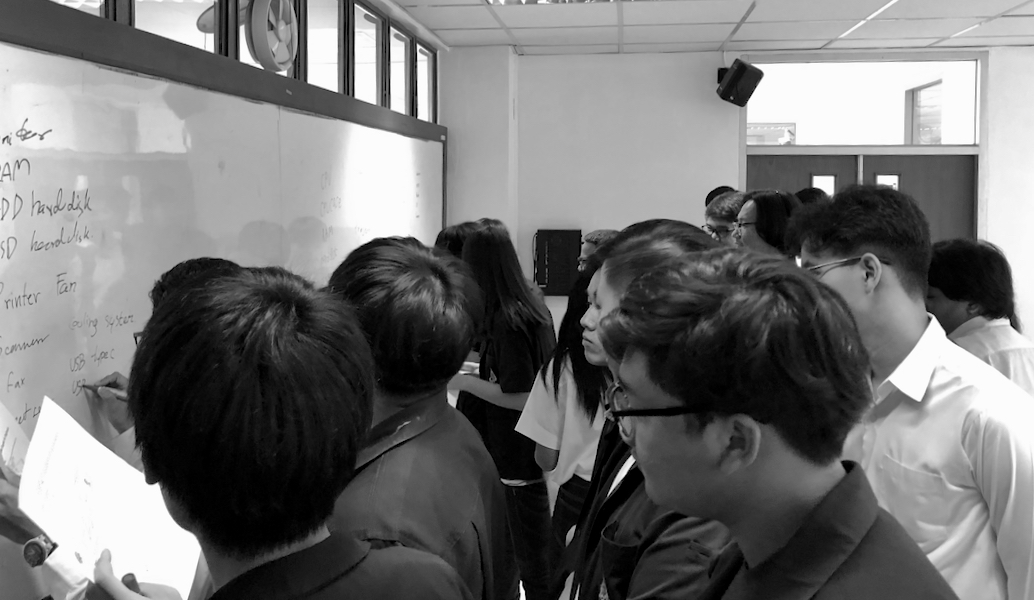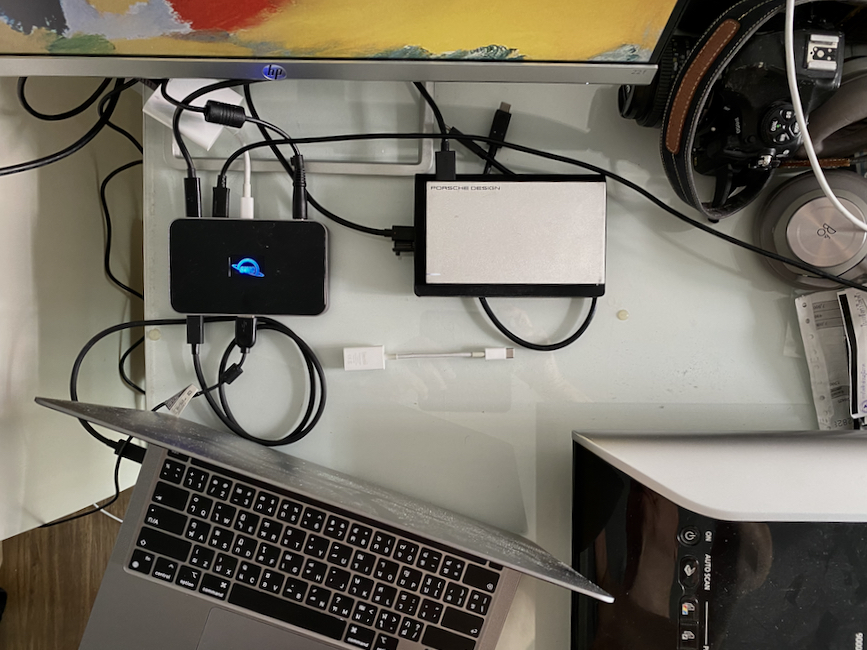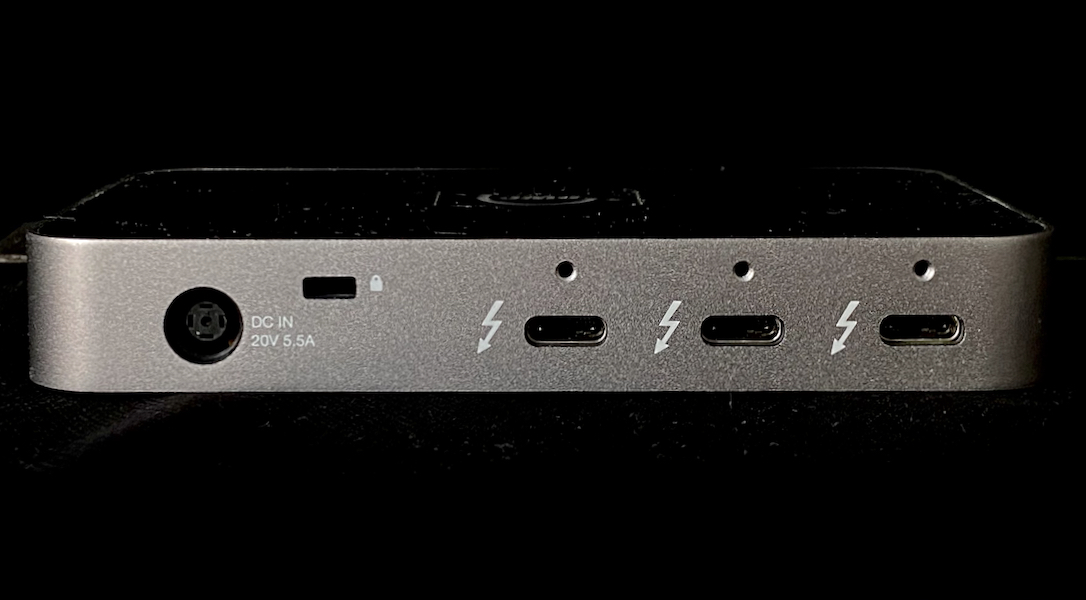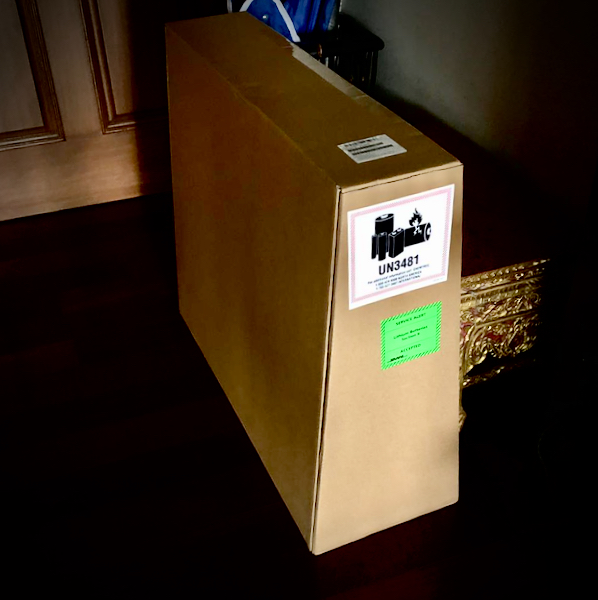|
|
Wednesday Notes: Slowly Moving to the M1 MacBook Pro; Online Teaching Drawbacks; Assange Decision (sp. correction)By Graham K. Rogers

It is clear that some students do not follow the online class. If I am working through online exercises that require the students to read sentences out loud, in the class I am able to ensure that most students are paying attention. That is not the case online. On several occasions when I asked students to read, they did not know which sentence they should be delivering. I can see that some students are taking phone calls, or working on other devices. I was also told by another teacher that she was messaging one of my students and only realised later that this was while my class was running. Feedback from students in the UK are generally positive with two problems: poor internet connections and students not submitting homework (even if done). As the Internet is often a factor that affects students here - and in many other countries - if only someone had come up with the idea of universally available connections, rather than the hodgepodge of systems, some of which seem to have been developed with the intention of keeping users out.
With an apparent lack of attention, much more is lost, apart from learning of course. I do not have exams for my courses. Instead I set a number of mini projects: some larger and more complex than others. A simple starter is a resume: to receive marks, a perfect version has to be produced and my part in this is to make suggestions as the work is delivered. To begin with, the work is a mess. Design and content are the two main areas I work on. In normal times, I make comments in class to the whole group. In the new normal, students send their work as PDF attachments and I mark up the content and send it back. In this way, the work evolves. Before, I would work on this the first class after the project was outlined. With online teaching, most did not begin to appear until after midterm exams, so time was being lost. I did set a final deadline, but for the first time some students failed to meet that. This was magnified with other projects, particularly the final writing project which some students did not begin until the last few days. A lesson for me here is that I need to set firm deadlines for the students: I cannot rely on them, which is a shame and I feel much has been lost.
That officer also had to come in instead of working at home, collect the pile of documents, read them at home, then return them (which uses fuel as well as time). For those on a Mac, Amber Neely (AppleInsider) explains how a digital signature can be added to a PDF document in MacOS. On the iPad Pro, I can do this fairly easily with the Apple Pencil in the same way I markup student writing. Save fuel, save time, reduce risk.

I put it to the test, but instead of the iPad Pro that I use for online markup of writing during a class, I scanned some negatives. I also ran a Time Machine backup disk. All three USB-C output ports were in use, as well as the USB type A port for the webcam. I still had the second USB-C port on the Mac free, so that meant I had some flexibility. After I had scanned the negatives, I kept the monitor attached to the Mac as on the old Mac, this had seen a power drop if I just used the battery. After an hour, the Mac was still showing 100%, while the Intel Mac showed a drop of a few percent with no other tasks running. In an online conference, that can drop to 20% in a 3-hour class. After a few more hours, the Intel Mac had dropped to just over 70% so that drop was due only to the monitor which does have its own power supply.

With the tasks I was running in the scanning session last week, while the screen saver was activated after a preset time, there was no surprise activation, so this may not be a problem for everyone. I wondered about him use, monitor brand, or other tasks that those affected users were doing. Apple is aware and no doubt a fix will be coming.
The investment group apparently has a $1 billion stake, so will be able to apply some pressure and wake the sleeping giant. With that in mind, it might be useful to read the article on AnandTech by Dr. Ian Cutress who in a comprehensive review (24 sections) examines the current Intel Flagship: the Core i9-10850K.
A problem came when trying to log in to iCloud. Although the username and password were accepted, verification failed several times. He was able to use the same account details to log in to the App Store, but then the login for iCloud changed. He was asked to enter the user password for Keychain authorization, followed by a request for the iPhone passcode. His company had changed this from numeric to alphabetic and the iMac refused to accept any characters. Typing in random numbers was possible (although obviously failed). Unlike me, he is not a major user of iCloud and its features, preferring to use external disks for any backup, while relying on apps other than those from Apple for messaging. It does still seem that this should work, for example for photos
In some ways it was. Each of the potential arguments was rehearsed in the PDF with the reasoning behind the decision at the end. It looked well-researched to my layman's eyes, but each time the defense argument was not upheld. That was until District Judge Vanessa Baraitser came to the argument concerning risk of suicide. She examined evidence from psychological experts, from lawyers, and from other sources. She had clearly dug into what would happen to Assange if he were extradited, particularly where he would be incarcerated. She outlined the potential sites and the probabilities of him going to these. I was particularly interested in descriptions of conditions he would be held under and these are core to her final decision. Also in that decision, the words of Mike Pompeo were cited to show the probability of where and how he would be held.
we have to recognise that we can no longer allow Assange and his colleagues the latitude to use free speech values against us. To give them the space to crush us with misappropriated secrets is a perversion of what our great Constitution stands for. It ends now (Baraitser decision, Page 93) In her opinion, the conditions were likely to cause a mental decline, with the probable result of suicide. On this, the extradition failed. The same quotation was used on Page 61 of the Decision where it was not seen as supporting the view that this was a political extradition. Many are pleased with the ruling that he cannot be extradited, although there is considerable disappointment that the other arguments were all dismissed, particularly that on the political nature of the prosecution. Pompeo's words that were used to show the risk of extreme incarceration were as much a statement of political revenge.
Graham K. Rogers teaches at the Faculty of Engineering, Mahidol University in Thailand. He wrote in the Bangkok Post, Database supplement on IT subjects. For the last seven years of Database he wrote a column on Apple and Macs. After 3 years writing a column in the Life supplement, he is now no longer associated with the Bangkok Post. He can be followed on Twitter (@extensions_th) |
|


 A friend took delivery of a new iMac this week. It had been on order since before Christmas, but these were in demand. He asked me to help him set it up. When we took it out of the box and started it up, I was surprised to see that it had Catalina installed: version 10.15.5. Before I updated to Big Sur on the Intel MacBook Pro, that was running 10.15.7, while the M1 MacBook Pro came with version 11.1 ready to go. Once I had created an Admin account for him, we downloaded Big Sur and that was soon installed. While setting up, we skipped the iCloud login as he would work in a user account. I created three of these: friend, wife and son.
A friend took delivery of a new iMac this week. It had been on order since before Christmas, but these were in demand. He asked me to help him set it up. When we took it out of the box and started it up, I was surprised to see that it had Catalina installed: version 10.15.5. Before I updated to Big Sur on the Intel MacBook Pro, that was running 10.15.7, while the M1 MacBook Pro came with version 11.1 ready to go. Once I had created an Admin account for him, we downloaded Big Sur and that was soon installed. While setting up, we skipped the iCloud login as he would work in a user account. I created three of these: friend, wife and son.
